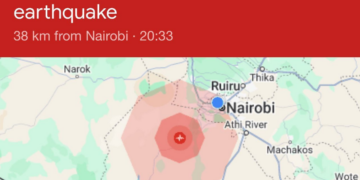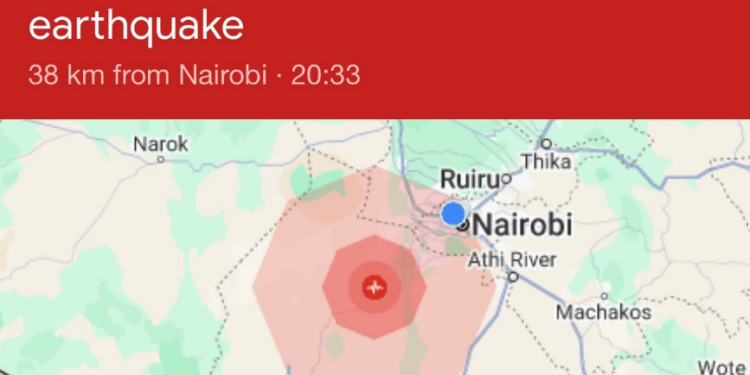By Ebi Kesiena
Kenyans experienced an earth tremor on Tuesday night in several parts of the country.
The tremor, occurring at around 8:34 pm, lasted for about 30 seconds and was reported in areas such as Kitengela, Ruaka, Westlands, Isinya, and Kajiado County. Residents in Kirinyanga, Kisii, Nyeri, and Murang’a also reported feeling the tremor.
According to Earthquake Monitor, a seismic activity with a magnitude of 4.6 was detected 87 km (54 mi) from Nairobi at 8:32 pm. The earthquake had a shallow depth of 10 km (6 mi), which caused it to be felt more intensely near the epicenter.
“The shallow depth of the quake caused it to be felt more strongly near the epicenter than a deeper quake of similar magnitude would,” Earthquake Monitor stated.
Kenyans took to social media platform X to share their experiences and concerns. One user noted, “Has anyone else just experienced a massive earth tremor? It’s kinda still ongoing but the intensity has gone down. It legit felt like my entire apartment was about to collapse.” Another user urged others to repost if they had experienced the tremor, expressing concern over the earthquake’s magnitude.
The Nairobi area and the broader East African Rift Valley region have a history of experiencing relatively large but infrequent earthquakes. The Kenya Rift Valley and the Kavirondo (Nyanza) Rift are the most seismically active areas in Kenya, with earthquakes typically ranging from magnitudes of 2.0 to 5.0. Historical records indicate that larger earthquakes of magnitude 6.0 or greater have occurred, such as the 1928 Subukia earthquake (magnitude 7.1) and its aftershock (magnitude 6.2), and a magnitude 6.2 earthquake in the Turkana region in 1913.
Overall, the seismic hazard in the Kenya Rift Valley is significant, with the potential for relatively large but infrequent earthquakes in the future.


































